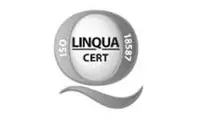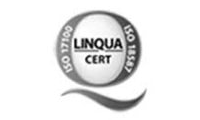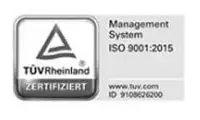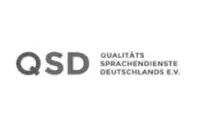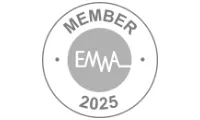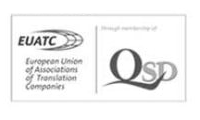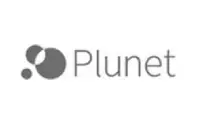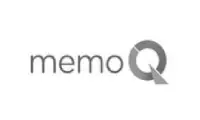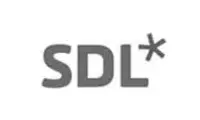
From technical translation to marketing translation
Good, qualified TECHNICAL TRANSLATORS are expected to translate extremely accurately and as faithfully to the original as possible, while MARKETING TRANSLATORS should focus on the meaning, the brand value and the tone and not on the actual words in the text.
The customer-specific workflow is tailored and your personal project manager is experienced and establishes the specific process together with you.
The mpü qualification and experience profile
for your multilingual free, creative and effective linguistic product message
In the target markets of our clients worldwide, our experts know the specific linguistic, technical, regulatory and cultural characteristics of the target audience and the target market, thereby increasing product acceptance and shortening time-to-market.
Briefing as a basis
The briefing aims to convey the core message and the brand identity, and forms the basis of the creation of all process steps and workflows. It requires intensive exchange between the mpü project manager and the customer.
Ideally, language service providers such as mpü translations are integrated into the process as far back as the creation of the source text.
Potential visual and linguistic localisation problems, in other words anything to do with
of the target market should be carefully considered before the start of the project. Options for how these could be remedied should be shown, for example through
PROCESS FOR MARKETING TRANSLATION
Our copywriters will provide the finishing touches to the translation, using their writing skills and linguistic sensitivity.
Free, creative and effective linguistic product message
1. Briefing
2. Checking of the source text for internationalisation
(colours/images/logos/plays on words, etc.) *
3. If necessary and feasible, adaptation and finalisation of the source text *
4. Re-briefing *
5. Technical translation
(native speaker technical or marketing translator and self-review of the translation).
For claims, slogans or headlines there may be several translations for each language
6. Revision according to DIN EN ISO 17100
(revision of the technical translation by a second native-speaker marketing expert on the basis of the dual control principle). Creation of the final version taking into account the suggested corrections
7. Creative editing (in the target language by copywriters/creative writers)
8. If necessary and feasible, review by an approver/second copywriter (in the target country) *
9. Finalisation of the marketing translation
10. If necessary and feasible, user test in the target country and decision about the best version (where there are several variants per language) *
11. Approval
* optional
On request we can create individual translation and localisation processes for our customers.
Marketing translations
SUCCESS OF THE BRAND MESSAGE
The key to successfully adapting marketing materials is the creative freedom of the translators, copywriters and creative writers to work in a
for targeted product and topic marketing.
To be successful in global business, valuable/significant and well formulated content of the marketing materials in all languages is more essential than even when it comes to establishing a strong international reputation and increasing revenue as a result.
“Content is king” – thanks to the exponential increase in the communication channels that are available for brand messages.
The ultimate goal of marketing translations should be that the source message is communicated in an effective and culturally accepted manner wherever it appears in the world and does justice to the brand/product.
Transcreation as a special case
Transcreation describes the process of what is known as “creative translation”, which is the focus of marketing when it comes to international product launches.
Transcreation is a very complex and extensive localisation process in which the focus is on ensuring that the look and feel are the same across all markets and there is a uniform brand identity around the globe .
In transcreation, the message is not translated, it is linguistically recreated.
An intensively prepared transcreation of marketing texts specifically for claims, slogans and headlines aims to strengthen the brand identity and distinctiveness on each target market.
The copywriters and transcreation experts at mpü take into account the following in the cultural, visual and linguistic creation or adaptation:
PROCESS OF TRANSCREATION
Content and brand communication recreated or adapted to the culture of the target market.
1. Briefing – style guide
2. Involvement in the editing of the source text – checking the source text for internationalisation (colours/images/logos/expressions, etc.) *
3. Finalisation of the source text *
4. Re-briefing – style guide *
5. Creative adaptation/transfer or recreation
(first native-speaker transcreation expert, marketing expert or copywriter)
in line with the briefing
6. Revision
(second copywriter/transcreation expert)
7. Creation of a first version
(if necessary in several variants)
8. Revision by an independent approver in the target country *
9. In-country user test *
10. Back translation with justification of the target country adaptation *
11. Decision about the final version
(where there are several variants per language)
12. Approval
* optional
Individual steps can optionally be selected for individual customer processes.
Creative here.
A scandal in other countries.
We know the difference.
Website translation and localisation
The quality of the translation of your website determines your strong web presence and international success.
The right localisation of the content and alignment of the SEO parameters guarantees that it’s seen, too.
Our project management for marketing will guide you through all of the process steps of website localisation and work with you to develop the best solution for your project.
We like to clarify the most important issues with our customers before we put together a quote:
1. Are all of the picture motives, symbols, colours, etc. suitable for an international audience too?
2. Is all of the content needed in all of the markets?
3. Is all of the price and measurement information and information about regulations equally relevant in all of the markets?
4. Are the statements made allowed in the country in question?
5. Is the content to be translated once or do you want a continuous translation process?
6. Can the customer CMS for the website manage multilingual content?
7. Is there an export and import function or a direct interface for connecting to common CAT tools (xliff export for memoQ, Trados, etc.) or is a translation of the static HTML files sufficient?
Linguistic/cultural adaptation/localisation of the website translation
SEO
The basis for international search engine optimisation (SEO) should be a professional marketing translation that contains the message and impact of the original but takes into account specific local factors, cultural aspects and features and region-related components of the target market.
Even if your website has been optimised for the search engines of the country of origin, you cannot guarantee that you will get the same results by simply translating the keywords word-for-word.
SEO ANALYSIS
mpü carries out an SEO analysis for you of the target markets and finds the keywords that correspond to the keywords you used in terms of the search volumes and the meanings.
Once a decision has been made about the optimal keyword mix, this is then consistently applied in the translation of your website.
GLOSSARY
To improve the keyword density and ensure a consistent application
of your company terminology in future translations, the keywords that have been identified are saved for you in a glossary. You can find more information on the translation technologies page.
Back End
Both the interface and the back end of your website are critical to successful localisation. If our customers are unable to do this step themselves, mpü can check the following:
Our marketing project management team can advise you about the process steps you need to implement your website and fit with your budget.
Get in touch. We look forward to working on a new project with you.
Our goal is to communicate your marketing message in the target country in such a way that it is perceived as the original and not a translation.
With us, your statement is received in the way it is intended.
Medical communication with the mpü portfolio
Personal – committed – creative
Multilingual desktop publishing (DTP)
Foreign language typesetting as part of the translation process
Integrating multilingual desktop publishing into the translation and localisation process is becoming increasingly important because many documents are elaborately designed, include graphics containing essential information and so on, and this layout must of course comply with requirements in the target languages.
Our DTP team therefore specifically focuses on meeting these complex requirements and time-critical processes:
We can advise you to ensure the process is as optimal as possible.
As part of this, we cover all common formats and all languages, including right-to-left scripts such as Arabic and Hebrew. Part of the process includes a final typesetting and line break check by native speakers of the target language.

